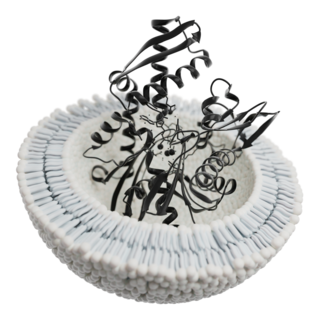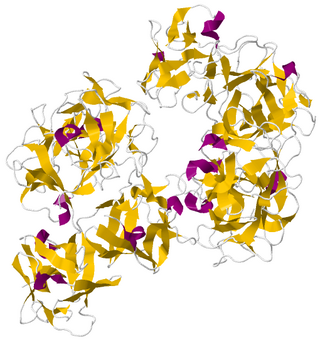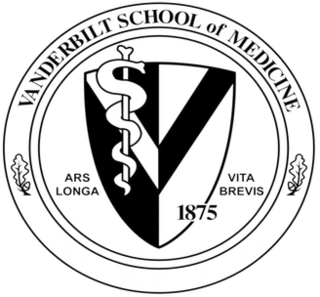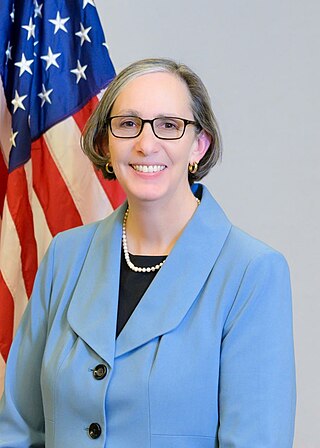
Podosomes are conical,actin-rich structures found on the outer surface of the plasma membrane of animal cells. Their size ranges from approximately 0.5 µm to 2.0 µm in diameter. While usually situated on the periphery of the cellular membrane,these unique structures display a polarized pattern of distribution in migrating cells,situating at the front border between the lamellipodium and lamellum. Their primary purpose is connected to cellular motility and invasion;therefore,they serve as both sites of attachment and degradation along the extracellular matrix. Many different specialized cells exhibit these dynamic structures such as invasive cancer cells,osteoclasts,vascular smooth muscle cells,endothelial cells,and certain immune cells like macrophages and dendritic cells.

Cortactin is a monomeric protein located in the cytoplasm of cells that can be activated by external stimuli to promote polymerization and rearrangement of the actin cytoskeleton,especially the actin cortex around the cellular periphery. It is present in all cell types. When activated,it will recruit Arp2/3 complex proteins to existing actin microfilaments,facilitating and stabilizing nucleation sites for actin branching. Cortactin is important in promoting lamellipodia formation,invadopodia formation,cell migration,and endocytosis.

Exosomes,ranging in size from 30 to 150 nanometers,are membrane-bound extracellular vesicles (EVs) that are produced in the endosomal compartment of most eukaryotic cells. In multicellular organisms,exosomes and other EVs are found in biological fluids including saliva,blood,urine and cerebrospinal fluid. EVs have specialized functions in physiological processes,from coagulation and waste management to intercellular communication.

Fascin is an actin bundling protein.

Microvesicles are a type of extracellular vesicle (EV) that are released from the cell membrane. In multicellular organisms,microvesicles and other EVs are found both in tissues and in many types of body fluids. Delimited by a phospholipid bilayer,microvesicles can be as small as the smallest EVs or as large as 1000 nm. They are considered to be larger,on average,than intracellularly-generated EVs known as exosomes. Microvesicles play a role in intercellular communication and can transport molecules such as mRNA,miRNA,and proteins between cells.

72 kDa type IV collagenase also known as matrix metalloproteinase-2 (MMP-2) and gelatinase A is an enzyme that in humans is encoded by the MMP2 gene. The MMP2 gene is located on chromosome 16 at position 12.2.

Vanderbilt University School of Medicine (VUSM) is the graduate medical school of Vanderbilt University,a private research university located in Nashville,Tennessee. The School of Medicine is primarily housed within the Eskind Biomedical Library which sits at the intersection of the Vanderbilt University and Vanderbilt University Medical Center (VUMC) campuses and claims several Nobel laureates in the field of medicine. Through the Vanderbilt Health Affiliated Network,VUSM is affiliated with over 60 hospitals and 5,000 clinicians across Tennessee and five neighboring states which manage more than 2 million patient visits each year. As the home hospital of the medical school,VUMC is considered one of the largest academic medical centers in the United States and is the primary resource for specialty and primary care in hundreds of adult and pediatric specialties for patients throughout the Mid-South.

Invadopodia are actin-rich protrusions of the plasma membrane that are associated with degradation of the extracellular matrix in cancer invasiveness and metastasis. Very similar to podosomes,invadopodia are found in invasive cancer cells and are important for their ability to invade through the extracellular matrix,especially in cancer cell extravasation. Invadopodia are generally visualized by the holes they create in ECM -coated plates,in combination with immunohistochemistry for the invadopodia localizing proteins such as cortactin,actin,Tks5 etc. Invadopodia can also be used as a marker to quantify the invasiveness of cancer cell lines in vitro using a hyaluronic acid hydrogel assay.
Brigid L. M. Hogan FRS is a British developmental biologist noted for her contributions to mammalian development,stem cell research and transgenic technology and techniques. She is currently a Professor in the Department of Cell Biology at Duke University,Born in the UK,she became an American citizen in 2000.
The International Society for Extracellular Vesicles (ISEV) is an international scientific organization that focuses on the study of extracellular vesicles (EVs). These membrane-bound particles are released from all known cells and include exosomes,ectosomes,exophers,oncosomes,and more. Established in 2011,the society is a nonprofit organization. It is governed by an executive committee. The current president is Buzás Edit. Previous presidents were Clotilde Théry (2018-2022),Andrew Hill (2016-2018) and founding president Jan Lötvall (2011-2016). The society's journals are the Journal of Extracellular Vesicles and the Journal of Extracellular Biology. ISEV also publishes the international consensus guidelines for EV studies,the "Minimal information for studies of EVs" (MISEV).
Extracellular vesicles (EVs) are lipid bilayer-delimited particles that are naturally released from almost all types of cells but,unlike a cell,cannot replicate. EVs range in diameter from near the size of the smallest physically possible unilamellar liposome to as large as 10 microns or more,although the vast majority of EVs are smaller than 200 nm. EVs can be divided according to size and synthesis route into exosomes,microvesicles and apoptotic bodies. The composition of EVs varies depending on their parent cells,encompassing proteins,lipids,nucleic acids,metabolites,and even organelles. Most cells that have been studied to date are thought to release EVs,including some archaeal,bacterial,fungal,and plant cells that are surrounded by cell walls. A wide variety of EV subtypes have been proposed,defined variously by size,biogenesis pathway,cargo,cellular source,and function,leading to a historically heterogenous nomenclature including terms like exosomes and ectosomes.
Douglas D. Taylor is an entrepreneur and former academic researcher in the field of extracellular vesicles.

Clotilde Théry is a professor and INSERM director of research (DR2) at Institut Curie in Paris,France. She is president of the International Society for Extracellular Vesicles (ISEV),where she previously served as founding secretary general and as editor-in-chief of the Journal of Extracellular Vesicles. She is team leader of the group "Extracellular Vesicles,Immune Responses and Cancer" within the INSERM Unit 932 on "Immunity and Cancer." Théry researches extracellular vesicles that are released by immune and tumor cells,including exosomes that originate in the multivesicular body.
Rose Mamelak Johnstone FRSC was a Canadian biochemist who is known for her discovery of exosomes,the cellular structures that transport proteins,lipids and RNA. She was the first woman to hold the Gilman Cheney Chair in Biochemistry (1985) and the first and only woman chair of the Department of Biochemistry in McGill University's Faculty of Medicine (1980-1990).
Marie R. Griffin is an American vaccine researcher. She is a Professor of Medicine and holds the Endowed Directorship in Public Health Research and Education at Vanderbilt University Medical Center.
Melinda Jean Beeuwkes Buntin is an American health economist and a professor at the Johns Hopkins Bloomberg School of Public Health and the Johns Hopkins Carey Business School. Previously,she was the Mike Curb Chair for Health Policy at Vanderbilt University,having served as a deputy assistant director for Health at the Congressional Budget Office.

W. Kimryn Rathmell is an American physician-scientist whose work focuses on the research and treatment of patients with kidney cancers. She is the Director of the National Cancer Institute,and most recently served the Hugh Jackson Morgan Professor and Chair of the Department of Medicine at Vanderbilt University Medical Center (VUMC),and Physician-in-Chief for Vanderbilt University Adult Hospital and Clinics in Nashville,Tennessee. On November 17,2023,Rathmell was nominated by President Biden as the next Director of the National Cancer Institute.
Ambra A. Pozzi is an Italian American physician who is a professor of nephrology in the Vanderbilt University Medical Center. She works on matrix biology and matrix receptor biology. In 2022,she was appointed President Elect of the American Society for Matrix Biology.
Cynthia "Cindy" Reinhart-King is an American biomedical engineer who is a University Distinguished Professor at Vanderbilt University. Her research considers cell motility and adhesion. She serves as president of the Biomedical Engineering Society.
Valerie M. Weaver is a professor and the director of the Center for Bioengineering and Tissue Regeneration in the department of surgery and co-director Bay Area Center for Physical Sciences and Oncology at the University of California San Francisco (USA). She has been working and leading oncology research for more than 20 years. Her scientific contributions have been recognised by different awards. She was the first woman to receive the Shu Chien Award from the Biomedical Engineering Society in 2022,which honours contributions in the cellular and molecular bioengineering field.









